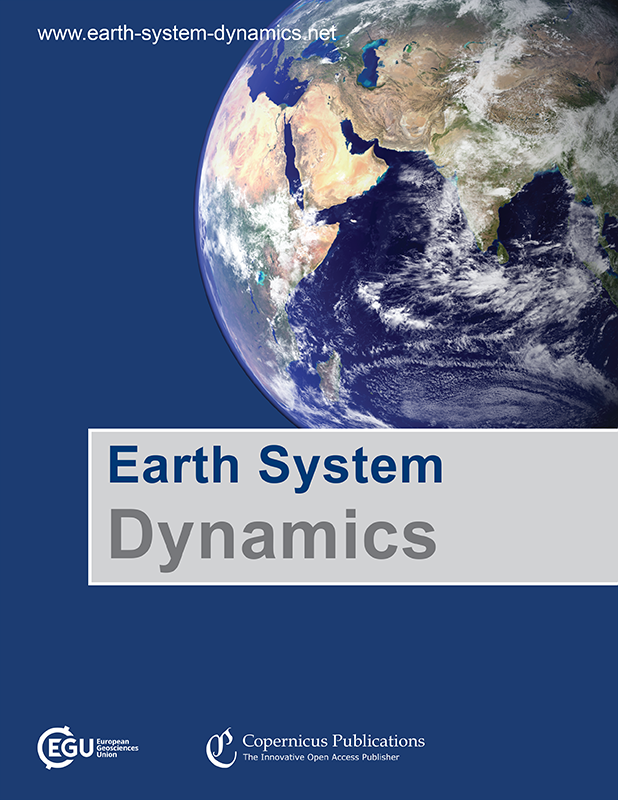欧洲夏季极度温暖之前,北大西洋海洋热量积累达十年以下
IF 7.2
2区 地球科学
Q1 GEOSCIENCES, MULTIDISCIPLINARY
引用次数: 0
摘要
摘要欧洲夏季气温的内部变化与季节、亚年代和多年代时间尺度上的各种机制有关。我们发现,在欧洲大陆的大部分地区,亚年代时间尺度主导着夏季气温的变化,并确定了亚年代时间尺度上控制极暖夏季的机制。我们的研究表明,经过带通滤波的欧洲夏季气温的十年以下温暖阶段(以下简称欧洲极暖夏季)与北大西洋副热带涡旋的增强、经向热输送的增加以及极端夏季前几年北大西洋海洋热含量的积累有关。海洋变暖影响了海洋-大气热通量,导致喷流减弱并向北移动,增加了斯堪的纳维亚半岛上空出现高压系统的概率。因此,我们的研究结果将欧洲极暖夏季的发生与北大西洋的热量积累联系起来,为提高未来几年极暖夏季的可预测性提供了可能,这具有重大的社会意义。本文章由计算机程序翻译,如有差异,请以英文原文为准。
Extremely warm European summers preceded by sub-decadal North Atlantic ocean heat accumulation
Abstract. The internal variability of European summer temperatures has been linked to various mechanisms on seasonal to sub- and multi-decadal timescales. We find that sub-decadal timescales dominate summer temperature variability over large parts of the continent and determine mechanisms controlling extremely warm summers on sub-decadal timescales. We show that the sub-decadal warm phases of bandpass-filtered European summer temperatures, hereinafter referred to as extremely warm European summers, are related to a strengthening of the North Atlantic Ocean subtropical gyre, an increase in meridional heat transport, and an accumulation of ocean heat content in the North Atlantic several years prior to the extreme summer. This ocean warming affects the ocean–atmosphere heat fluxes, leading to a weakening and northward displacement of the jet stream and increased probability of occurrence of high-pressure systems over Scandinavia. Thus, our findings link the occurrence of extremely warm European summers to the accumulation of heat in the North Atlantic Ocean and provide the potential to improve the predictability of extremely warm summers several years ahead, which is of great societal interest.
求助全文
通过发布文献求助,成功后即可免费获取论文全文。
去求助
来源期刊

Earth System Dynamics
GEOSCIENCES, MULTIDISCIPLINARY-
CiteScore
13.20
自引率
5.50%
发文量
61
审稿时长
36 weeks
期刊介绍:
Earth System Dynamics (ESD) is a not-for-profit international scientific journal committed to publishing and facilitating public discussion on interdisciplinary studies focusing on the Earth system and global change. The journal explores the intricate interactions among Earth's component systems, including the atmosphere, cryosphere, hydrosphere, oceans, pedosphere, lithosphere, and the influence of life and human activity. ESD welcomes contributions that delve into these interactions, their conceptualization, modeling, quantification, predictions of global change impacts, and their implications for Earth's habitability, humanity, and the future dynamics in the Anthropocene.
 求助内容:
求助内容: 应助结果提醒方式:
应助结果提醒方式:


